Our 2025 travel guide to visiting Málaga in Spain – Discover the top things to do in Málaga old town, the best Málaga beaches, and places to visit nearby on the Costa Del Sol.
Visit Málaga, see the historic sites in the old town, relax on the best beaches, and then taste Spanish cuisine on a ‘tapas’ tour in the evening. There are so many fabulous things to do in Málaga, Spain’s beautiful city on the Costa del Sol sunshine coast, you’ll be tempted to stay here.
Sun, sea and history in Málaga city is the perfect plan but are you looking for something a little different? Explore the eastern stretches of Costa del Sol, the laid-back resorts and secluded coves with cool coastal walks, then into the mountains of nearby Axarquia to see the quaint villages, or across the scenic landscapes of Montes de Málaga National Park.
And if you’re thinking about spending a week or two on a special trip, then use Málaga as a base for exploring more of Andalusia, combining exciting destinations such as Nerja and Granada, Marbella, Gibraltar and Cádiz, or Seville and Cordóba!
Visiting Málaga and Costa del Sol

- Visiting Málaga and Costa del Sol
- Visiting Málaga for 1 or 2 Weeks
- Useful Info and Things You Need to Know Before a Visit to Málaga
- Related Posts: Places to Combine with a Visit to Málaga
Historic Sites in Málaga Old Town
Málaga is the capital of Spain’s sunny Costa del Sol, a typical Andaluz city with an intriguing history and beautiful beaches bathed by the Mediterranean Sea. Still fairly untouched by international tourism, it’s fascinating to wander around the narrow streets of the historic quarter.
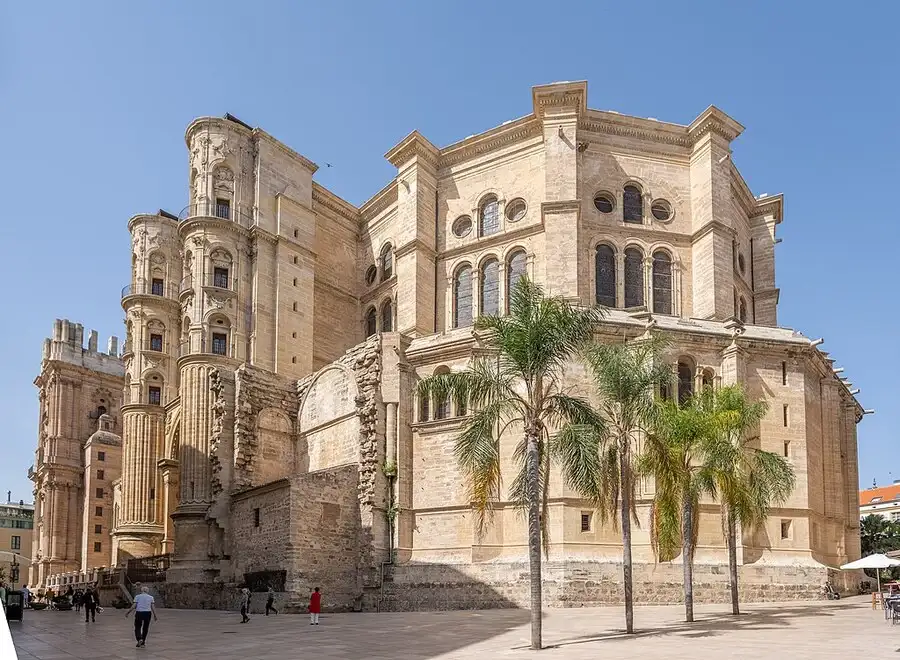
History is palpable as you walk around the old town. It doesn’t take much to imagine back to Roman times in the amphitheatre, to the Moorish Court at the Castle, the splendour of Catholic Queen Isabella and Ferdinand at the great Cathedral or the adjacent 16th century Palace which now houses the Museum of Fine Arts.
The Moors occupied this part of Andalusia until the mid 15th century, leaving their imprint on Málaga’s historical centre, particularly around La Alcazaba, a fortress which dates back to 1065 and is now an archaeological museum.
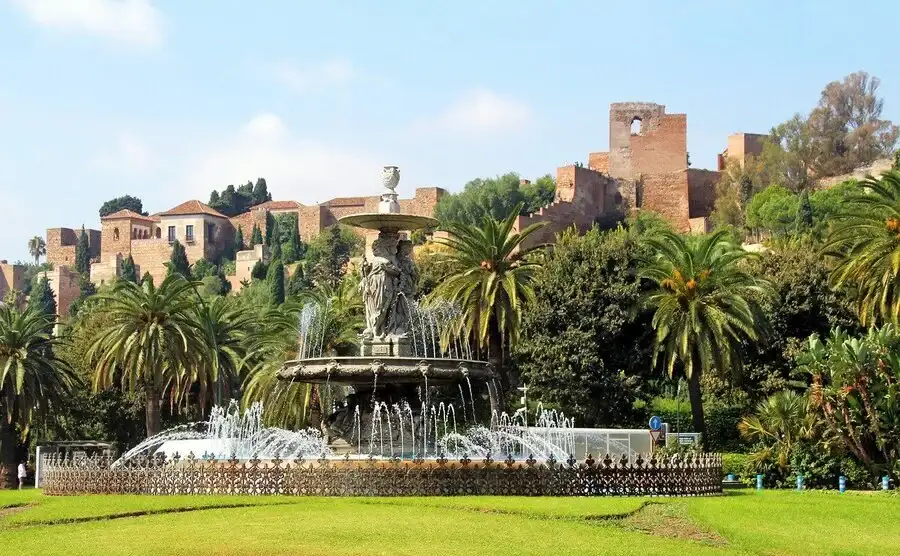
However, Málaga dates much further back than this, considered to be one of the oldest cities in the world people evidently lived here almost 3,000 years ago. The Phoenicians used ‘Malaca’ as a sea trading base in the seventh century BC, while Roman troops took command somewhat later in 3 BC and significantly developed the seaport.
In the Middle Ages, Málaga prospered to became one of Spain’s leading merchant cities. During the 19th century, this became a popular winter resort for the wealthy, famed for its artistic flavour. The large park on Calle Alameda dates back to this era and is one of the most notable botanical gardens in Europe. During the winter, open air concerts are held here every Sunday.
Nowadays, Málaga is a trendy city with fashionable stores and popular café terraces along the central Calle Larios avenue, an ideal place to start exploring the traditional side streets and elegant plazas.
Visit Málaga Cathedral
The major sights in Málaga include the 16th century Renaissance-style Cathedral which has a magnificent Baroque façade and an ornamental ‘orange tree’ patio framing one side. The beautiful Gothic interior has 12 chapels leading off the main nave, and a splendid choir dais.
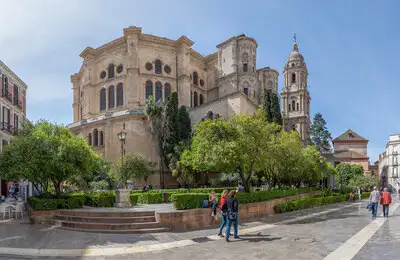
Works of art include the altarpieces and sacred paintings. You can also climb some 200 steps up the bell tower to the cathedral roof for the best panoramic views of the city! Cultural visits include an audio guide (seven languages including English).
A number of other distinctive Roman Catholic Churches, as well as Santa María de la Victoria Basilica, San Agustín Convent and the Cistern Abbey -all built between the 15th and 18th century- are located within a short walking distance inside Málaga old town.
Please note: Málaga Cathedral roof terraces are currently closed while repair work is being carried out.
Entrance tickets can be booked on the Málaga Cathedral offical website.
Art Museums and Culture
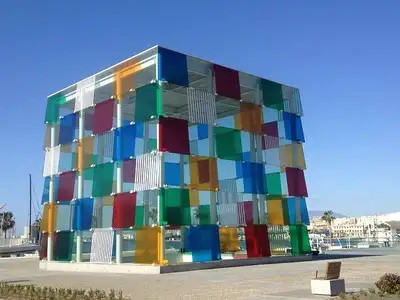
Known as City of Museums there are at least 36 museums in Málaga, showcasing everything from holy relics to wine, archaeology to football paraphernalia, making a surprising compendium for culture lovers of every type. For example, the Carmen Thyssen Museum houses a collection of valuable works by classic Spanish masters in Villalón Palace.
Or stroll into Soho district bordering the harbour and Guadalmedina River, to see amazing street art or private artists’ studios, the Centre of Contemporary Art and Alameda Theatre. Down by the marina, the large Pompidou Centre holds several exhibitions in the distinctive ‘cubo’ building (the one with a huge pop art glass cube on top).
Picasso Birthplace and Picasso Museum
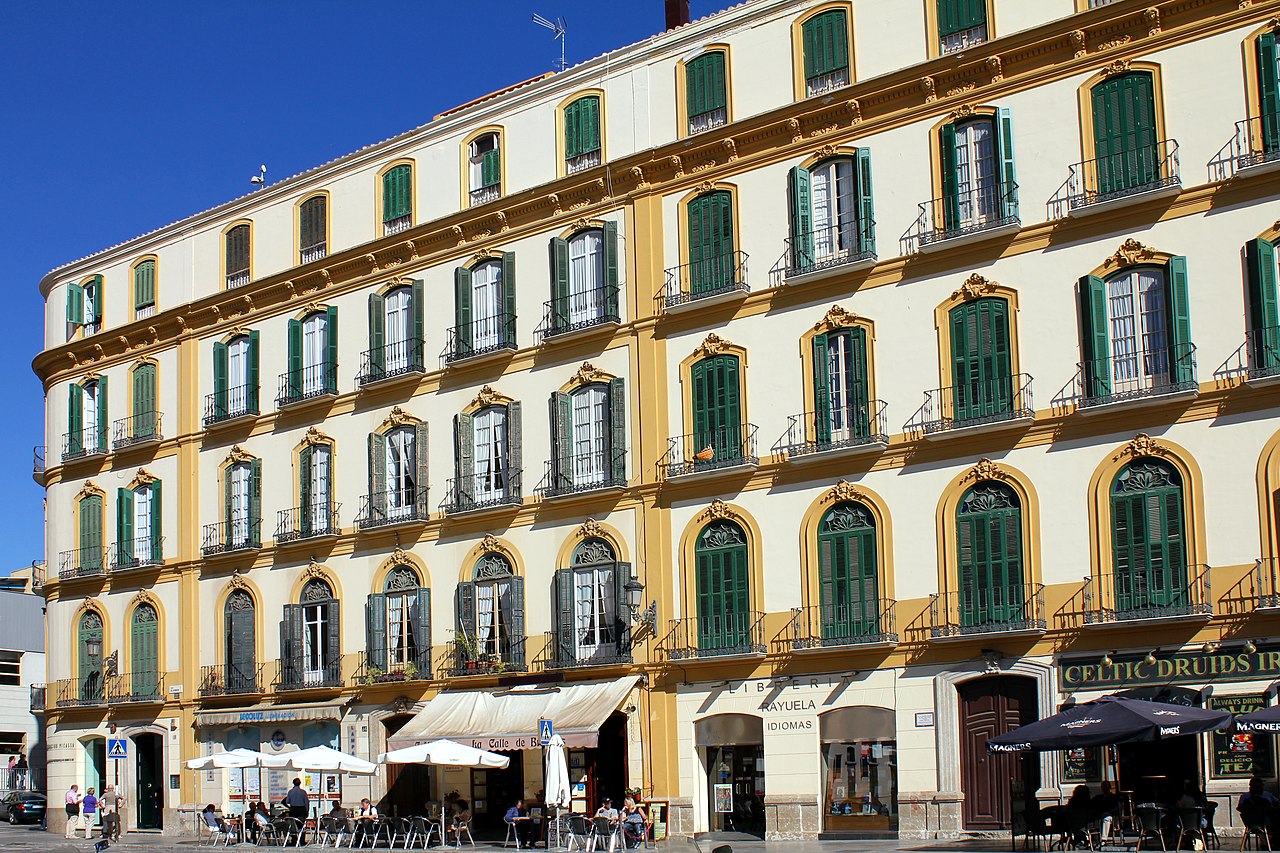
Picasso however, is the real focal point in Málaga. Spain’s celebrated painter, Pablo Picasso was born in 1881 in the corner house of an elegant yellow and green toned building on Plaza de la Merced. His birthplace is a ‘historic-artistic’ monument and the matrix of the Picasso Foundation, which has been created to further cultural activities and for the promotion of contemporary art.
The Picasso Museum is a few minutes away in the Buenavista Palace, where there are several exhibition halls displaying permanent and temporary art collections. Phoenician and Roman ruins have been uncovered in the basement of this incredible building.
Open daily from 11am. Standard adult entrance ticket to museums and exhibitions costs 12€.
Visit Málaga Alcazaba

Maybe not as grand as Granada’s Alhambra, Málaga Alcazaba is nevertheless another awesome Al-Andalus legacy and one of Málaga’s main tourist attractions. The ‘Al-qasba’ was designed for the Emirate of Granada in the 1100s, in a defensive position on the hillside overlooking the port.
A double-walled fortress with watchtowers encircles an inner palace of Muslim design where you can see the typical keyhole-shaped brickwork archways unusually supported by Roman columns. The Andalusian patios and gardens are adorned with fountains, rectangular pools, and intricate water features to refresh the hot Mediterranean summers.
Entrance fee: 3.50€; Students, pensioners, children, and disabled persons: 1.50€.
Combined Alcazaba + Castillo de Gibralfaro: 5.50€
Summer opening hours: 9am to 8pm; Winter opening hours: 9am to 6pm.
Castillo de Gibralfaro
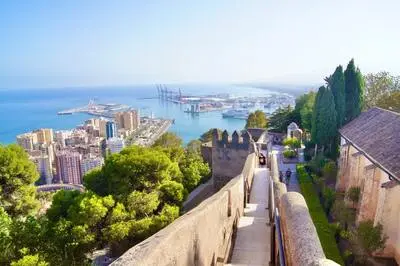
Fourteenth century Castillo de Gibralfaro was built above the Alcazaba for additional protection, with a stone corridor running between the two. The name comes from the word ‘faro’, the lighthouse which used to stand on the hill to guide vessels into harbour and also to warn of pirate attacks!
Thought to be virtually impregnable, a historical moment occurred in 1487 when the castle and palatial fortress were captured by the Castile Crown troops after the siege of Málaga.
It’s worth the trip up to just to wander around the ramparts and for the panoramic views over Málaga bay (drive up or catch a bus if you don’t fancy walking).
Roman Amphitheatre
Looks like the Moors weren’t into arenas, because they ravaged the Roman’s amphitheatre, removing the white marble columns and mining the stones to use in the Alcázaba Palace directly above.
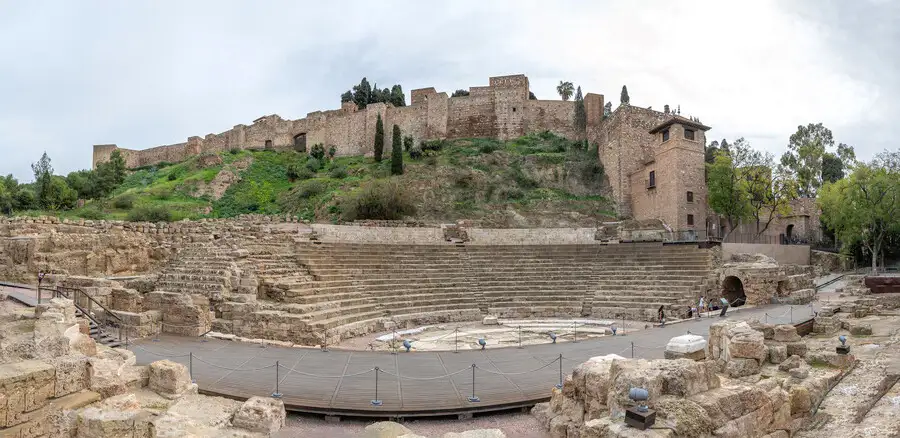
This neglected historic treasure lay half-buried and hidden from sight at the foot of the Alcázaba through the ages, until eventually discovered only decades ago!
Málaga Old Town Squares
Plaza de la Merced
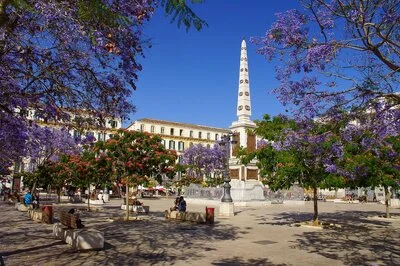
Plaza de la Merced is one of Málaga’s best known town squares as Piccaso was born in the house here. Originally a public market place since Roman times, an obelisk ‘Monumento a Torrijos’ stands in the centre of the plaza over the tomb of General Torrijos and 48 liberal rebels who were shot without trial on the beach of San Andrés, under orders of King Ferdinand VII in 1831.
A rather more peaceful bronze statue reminder of Pablo Picasso sits on a stone bench.
Plaza de la Constitución
Formerly the main town square, the historic old town hall, mayor’s house, the jail, a Jesuit college and Agustines Convent encompass the pedestrian plaza which has an ancient marble fountain in the middle. A focus point for the famous ‘Feria de Málaga’ August Fair and New Year’s Eve celebrations, it’s a juncture where four busy shopping streets meet including fashionable Calle Larios.
Things to Do in Málaga
As well as being a cultural gem, Málaga is a great place to eat out. The Malagueños love their food, and the traditional bars and restaurants are where the real social life takes place.
Eating Out – Typical Food in Málaga
A typical late breakfast is a crusty bread roll spread with freshly grated tomato and a little olive oil, and thin slices of tasty ‘jamon serrano’ (Spanish cured ham) as a filling, plus a glass of squeezed pure orange juice or an espresso coffee. If you prefer something sweeter, try ‘tejeringos’ the Malagueña version of ‘churros’ (spirals of fried dough sprinkled with sugar) served with thick hot chocolate for dipping or a cup of ‘café con leche’ (latte).

Fish is one of the most popular foods in Málaga. A local delicacy, ‘pescaito frito’ is an assortment of fish in batter, including ‘salmonete’ (red mullet), squid rings and prawns, best washed down with a glass of ice cold ‘fino’ dry sherry at one of the many old fashioned bodegas in town. ‘Boquerones’ (anchovies) are another favourite either pickled, grilled or fried.
Meanwhile, beach eateries are the place for ‘espeto de sardinas’ (fresh sardines on a wooden stake barbecued over an open fire).
If you want a typical starter, ‘ajo blanco’ is a chilled garlic and almond soup with tasty titbits floating on top, or try a Málaga potato salad mix of salted cod with orange slices, boiled egg and olives.
Tapas are an Andalusian tradition and a wonderful way to try a variety of local food. On the menu in Málaga, you’ll likely see ‘tapas’ (aperitif sized dish of a local specialty), ‘media ración’ (half a plateful), and ‘ración’ full ration – the idea is to share portions with your companion or friends, either for lunch or dinner, or just enjoy picking in between!
Atarazanas Market
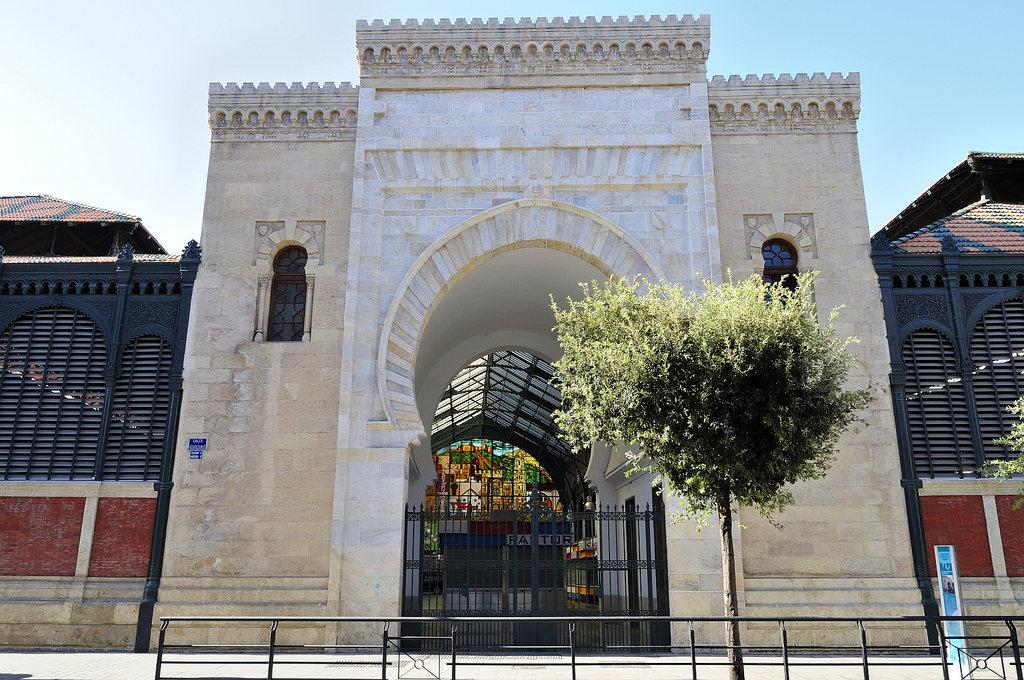
Commonly known as Málaga Market or ‘mercado central’, this 19th century food hall has an amazing array of everything grown under the Mediterranean sun -seasonal fruits and veggies, fresh fish and meat stalls, local produce such as sausages and cheese, olive oils and wines, breads and pastries, pickles and nuts, herbs and spices.
Open mornings Monday to Saturday until 2 pm or so, stop off to admire the pavilion’s architecture (the main entrance is a monumental gateway cleverly rescued from the 14th century boatyard which originally occupied this site). Then wander inside where a massive stained glass wall throws colourful sunbeams along the aisles to complete the lively atmosphere. Enjoy a coffee or cool drink (and dare I mention it again, tapas!) at one of the little cafés.
Hamman Al Ándalus Arab Baths (Málaga)
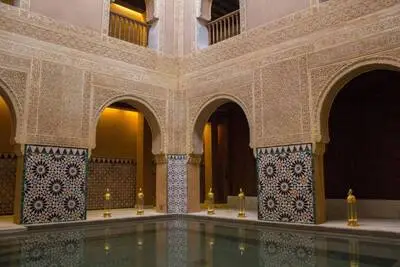
Hamman Al Ándalus is traditional spa in the heart of Málaga, beautifully decorated in similar Moorish style to the Granada and Cordoba baths, with Andalusian tile detail and archways lit by Nazari lamps.
Relax drinking mint tea, lying in the sauna, take a revitalising cool plunge, then laze in thermally perfect pools dreaming away, and finish with an aromatic oil massage. The natural water source is deep underground and drawn up from wells.
These Arab baths are located next door to the Carmen Thyssen Museum in a fabulously restored and atmospheric historic building.
Parks and Gardens in Málaga City

Parque de la Alameda – Málaga Park
Stroll down the avenues of Málaga Park, a leafy boulevard bordering the city’s seafront by the new marina. Once again designed in the 1900s, subtropical trees and plants from the 5 continents make up what is really a public botanical garden. This is a lovely walk with a number of statues and landmark fountains adorning the way.
Jardines de la Concepción (Málaga Botanical Gardens)
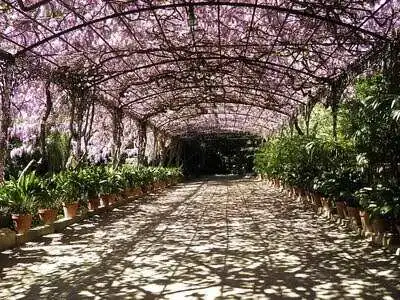
Not to be confused with Málaga Park, La Concepción Botanical Gardens are 5 kilometres outside the city centre on the road towards Granada.
The extensive collection of palms is the largest in the world with some particularly rare species such as the wine palm from Chile. In fact, the whole place is so pretty it’s a fab venue for weddings especially in January as the wisteria covered arbour comes into bloom.
Themed routes take from 1 to 2 hours, but you can easily spend the whole afternoon in the gardens walking through bamboo forest, past indigenous vines and lotus lily ponds, stepping over streams and past cascades to dramatic viewpoints. Exotic flora includes orchids and creepy carnivorous plants!
Opening Hours: 9.30 am to 5.30 pm October to March, and 9.30 am to 8.30 pm April to September. Closed Mondays.
Entrance Fees: Adult 5.20€ / children 6-16 years, students, or pensioners 3.10€ each. Free entrance on Sunday afternoons. Dogs are welcome (must be kept on a leash).

Best Beaches in Malága City
Málaga has kilometres of ‘Blue Flag’ sandy beaches with palm tree ‘oases’ mainly situated along the main promenade, which is conveniently lined with an array of restaurants, cafés and facilities. La Caleta and Malagueta are the most popular beaches, being close to Málaga city centre and therefore the busiest.
Here’s a shortlist of the best beaches in Málaga City from east to west (most are within easy walking distance of down-town or can be reached on the bus route from Alameda Promenade).
1. Playa Peñon del Cuervo

Peñon del Cuervo or Raven Rock Beach is a cool place to watch the sunrise over the Mediterranean Sea. One of the quieter stretches of sand, the name comes from the huge black rock on the seashore.
An hour on foot from Málaga city centre, cycle there in 30 minutes, or get bus nº 11 to the end of the line and walk the last 10 mins.
2. Playa El Palo and Pedregalejo

Just off the main Málaga promenade, El Palo beach is a favourite with families as the gently sloping shallow waters are ideal for paddling and bathing.
The original fisherman’s district, a string of sandy coves with seafood restaurants and beach facilities link down to Playa Pedregalejo.
This area is also popular for diving. Disabled access and kiddies play-parks.
3. Baños del Carmen

This pebbly cove beside Pablo Ruiz Picasso seafront promenade is famous for its lively ‘chiringuito’ beach bars, and the Baños del Carmen restaurant and traditional bathing pavilion which dates back to 1933 at the far end. Good for watching the sunset, and for a romantic dinner with sea views!
4. La Caleta
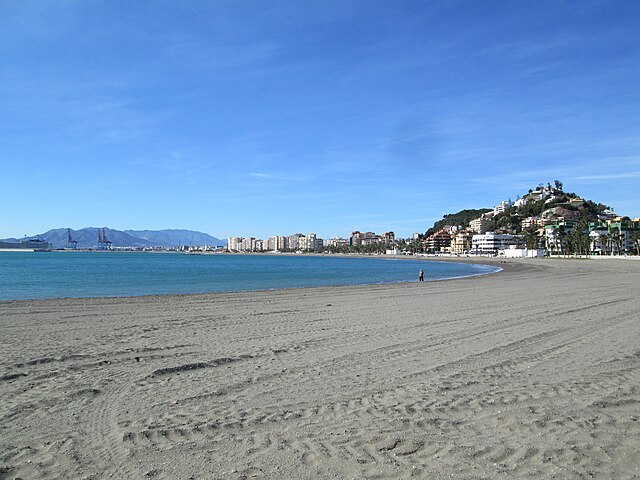
La Caleta is an urban beach with fine sands and palm trees, the ‘golden mile’ so to speak, where Málaga tourism began in the late 1900s. Classy period villas and mansions back onto the seafront boulevard.
Loads of amenities including disabled access and pedalos, but not the best idea for small kiddies as the sea shelves sharply out of depth.
5. La Malagueta

Enhanced with desert sands brought in from the Sahara, Málaga’s lively broad main beach is off the east end of Picasso promenade. Lots of restaurants and beach bars to choose from which are open first thing in the morning until late.
Focal points are the ‘Malagueta statue’ and views to the fishing boats and cruise liners in port! Once again, excellent ‘Blue Flag’ quality waters for bathing, plus plenty of amenities and disabled access.
6. Playa San Andrés

San Andrés beach is one of Málagas’s top beaches, a ‘playa’ of fine sands with palm trees, sprawling west of the port to the Guadalmar River estuary. There’s a seafront promenade with eateries and trendy ‘chiringuitos’ to have tapas or a cool drink. Disabled facilities.
This beach is known historically for the 1831 shooting of revolutionary rebels, and for the old sugarcane factories in the area.
7. Playa de la Misericordia

‘Mercy Beach’ is a great one for families, and with 2 kilometres of gently sloping golden sands you can just imagine how popular it is! The old sugar plant chimney is a distinctive landmark.
However, this place has more of a local feel and is not typically touristy. Just west of the city get here on foot if you fancy the walk, cycle or catch the nº 7 bus from the Alameda. Amenities and disabled facilities.
8. Playa del Guadalhorce
A lovely quiet beach by the mouth of River Guadalhorce and the nature reserve, frequented by naturists. Nice for lying on the sands, or for riverside walks, but be careful swimming as the seabed shelves quickly and there are strong sea currents.
9. San Julian Guadalmar

San Julian’s is the beach you’ll fly over coming into Málaga airport as it’s more or less under the flight path. A rather wild, wide stretch of dark sands and shingle over 2 kilometres long, there’s a nudist zone for those who like an all-over suntan. Backed by the greens of Málaga Parador golf course, this is a favourite place for kite-surfing and there are some fashionable beach bars to relax. Otherwise, stroll down to Torremolinos, to see the next resort along. Amenities and disabled access.
As you can see, ‘Málaga – sun, sea and history‘, perfectly describes this unique Spanish city on the shores of the Mediterranean.
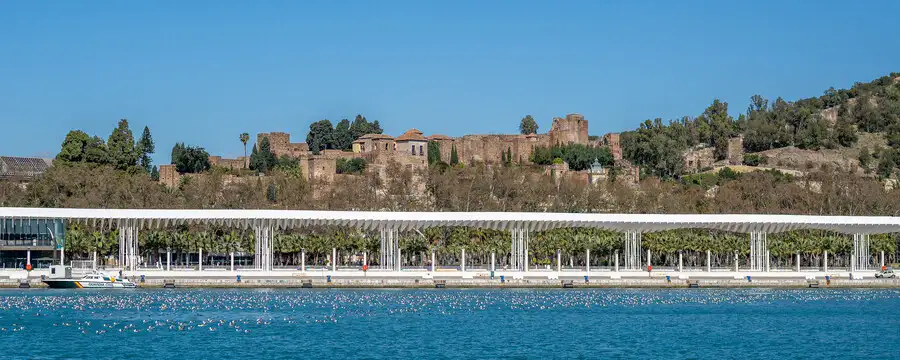
Visiting Málaga for 1 or 2 Weeks
The Province of Málaga reaches from Granada Province to Cádiz Province covering almost 300 kilometres of Mediterranean coastline. While Málaga is a top destination for a 2 day city break, a 7 day vacation or a couple of weeks is ideal for discovering more of the Costa del Sol. These are some of the best places around Málaga to see.
East Costa del Sol

La Axarquia is a region east of Málaga that runs up to the border with Granada. This part of the Costa is relatively unknown and easy to explore by car. Drive inland to see the historical town of Vélez-Málaga, and then back to the coast to enjoy the beautiful beaches of Rincón de la Victoria.
Take a day out to see Nerja, one of Spain’s classic resorts with a lively town centre and the ‘Balcony of Europe’ overlooking the Mediterranean, as well as extraordinary long sandy beaches. Nearby, Nerja caves are worth a visit, then head for the hills and stroll around the flowerpot lined steep little streets of Frigiliana (one of the most picturesque villages you can imagine).
For those who love hiking, Málaga Province is a good choice, except in summer when it’s a bit too hot! In fact, if you fancy a peaceful holiday, you can stay in a rural retreat in the mountains and drive in to see the city sights or for a day at the beach.
West Costa del Sol

A succession of top holiday destinations and leisure harbours unfold westwards along the world famous Costa del Sol. From Málaga downwards you’ll find busy unpretentious Torremolinos (popular with UK holidaymakers and expats), a unique marina in Benalmádena, the wonderful beaches and street cafés of Fuengirola, fashionable Marbella with its beach clubs, and luxurious Puerto Banus.
The quieter cuteness of Estepona’s old town is surrounded by 21 kilometres of laid-back coastline. Leave the international tourists behind at Manilva, a white-washed hill village overlooking a family-friendly seaside resort and superb golf courses. From here, it’s only a 30 minute drive into Gibraltar or on to Cádiz Province.
Useful Info and Things You Need to Know Before a Visit to Málaga
Málaga is located on the Costa del Sol, in the Andalusia Region of southern Spain.
How to Get to Málaga
By Air
Málaga Costa del Sol International Airport (AGP) is 8 km outside the city. There is an airport express bus service into the centre of Málaga as well as private shuttle buses which go to all the main resorts along Costa del Sol. Car hire and taxis are available from the airport, best to book in advance. A train service connects to Málaga city railway terminal. The fourth busiest airport of Spain, there are flights to some 20 cities in Spain, and over 1000 international destinations.
By Train
Málaga City Railway Terminal is on the western side of the city, a 10 minute walk from the centre. Medium and long distance trains run to various parts of Andalusia and major cities in Spain.
High speed AVE trains from Málaga to Córdoba (50 minutes), Seville (2hr), Madrid (2h 20m), Valencia 4h 30m), Zaragoza (4hr) and Barcelona (6hr).
Málaga Metro has 2 underground lines both leave from El Perchel train station near Málaga port. The blue line runs westwards down the coast as far as the sports stadium.
By Road
Driving to Málaga:
Distance from Málaga and estimated travel time to main cities in Spain by car:
Granada 125 km (1 hour 40 minutes via A90) or 150km (1h 50m along via A7 & A44); Córdoba 160 km (1h 50m via A45); Seville 200 km (2h 20m via A92); Madrid 550 km (5hr via A4); Bilbao 920 km (8h 40m via A4); Barcelona 975 km (9h 30m via AP7).
Getting to Málaga by Bus:
Málaga Coach Station is located beside the train station on Paseo de los Tilos. There are bus routes to the main towns in Andalusia and local buses to get around, as well as long distance coaches to the rest of Spain.
By Sea
Ferry: Passenger ferries leave Málaga port most days a week for Melilla (North Africa). Around 6.30 hours sailing time.
Cruise Ship: Málaga is a major Mediterranean stop for cruise liners.
Private Boat: Málaga has a magnificent marina for private yachts and boat hire.
Related Posts: Places to Combine with a Visit to Málaga
Visiting Spain and only 3 days to see Granada?
Our ultimate Granada guide explains how to see the historical city sites, and the top things to see and do.
Sierra de Cazorla National Park
Sierra de Cazorla National Park. Sleepy villages with age-old traditions, historic castles with astounding views, and the lively market town of Cazorla itself, complete the varied landscape of this UNESCO biosphere reserve.
2-Day Guide to Seeing the Sites of Seville
The panoramic view from our bedroom terrace at Hotel Alcázar was stunning – Seville skyline was backlit by the sunset, the unmistakable Giralda tower and a dozen church spires piercing the sky.
A Guide to Visiting Córdoba World Heritage City
Córdoba historic centre is a UNESCO World Heritage City in Southern Spain. Here’s our choice of 25 sites to see and the top things to do when you visit Córdoba.
Visit Mojácar and Cabo de Gata (Almería)
From the white Moorish village in the hills of Almería, the sunlit view to the shimmering beaches of Mojácar, and Cabo de Gata nature park, is one of the most extraordinary sights in Spain.
Discover the World with![]() the blog with a focus on independent travel
the blog with a focus on independent travel




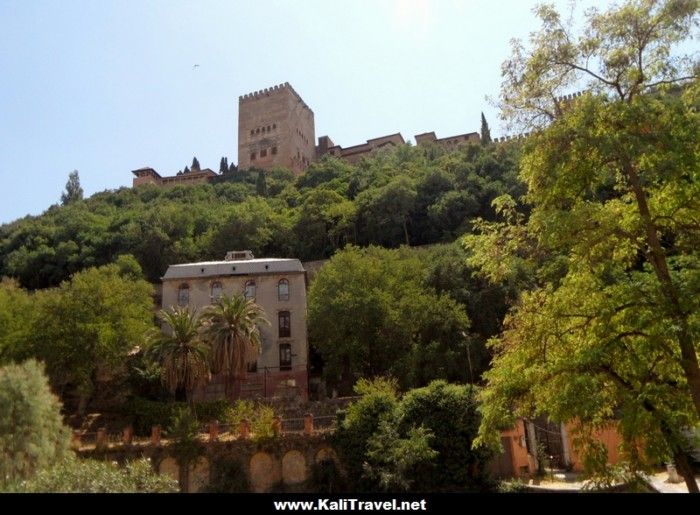
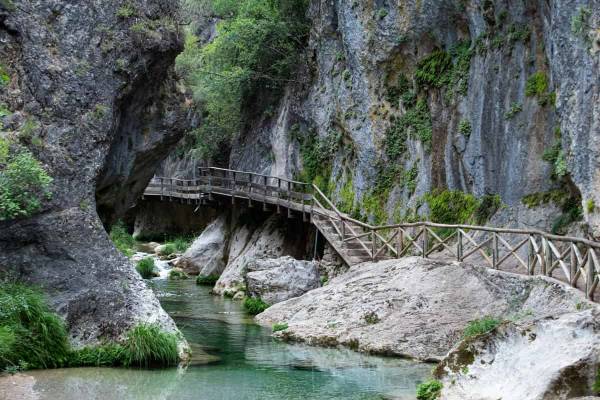
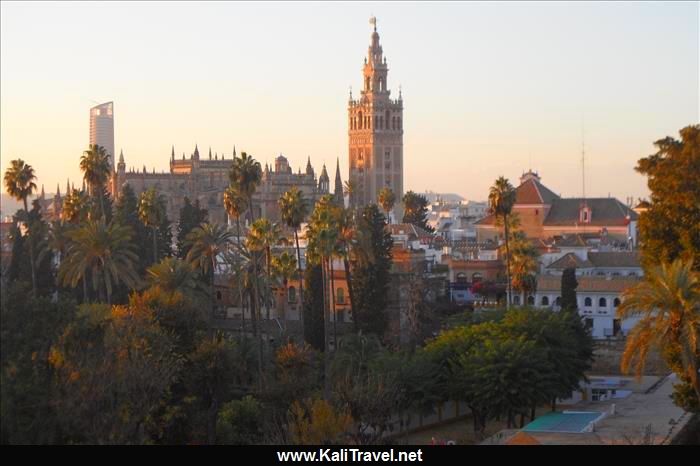
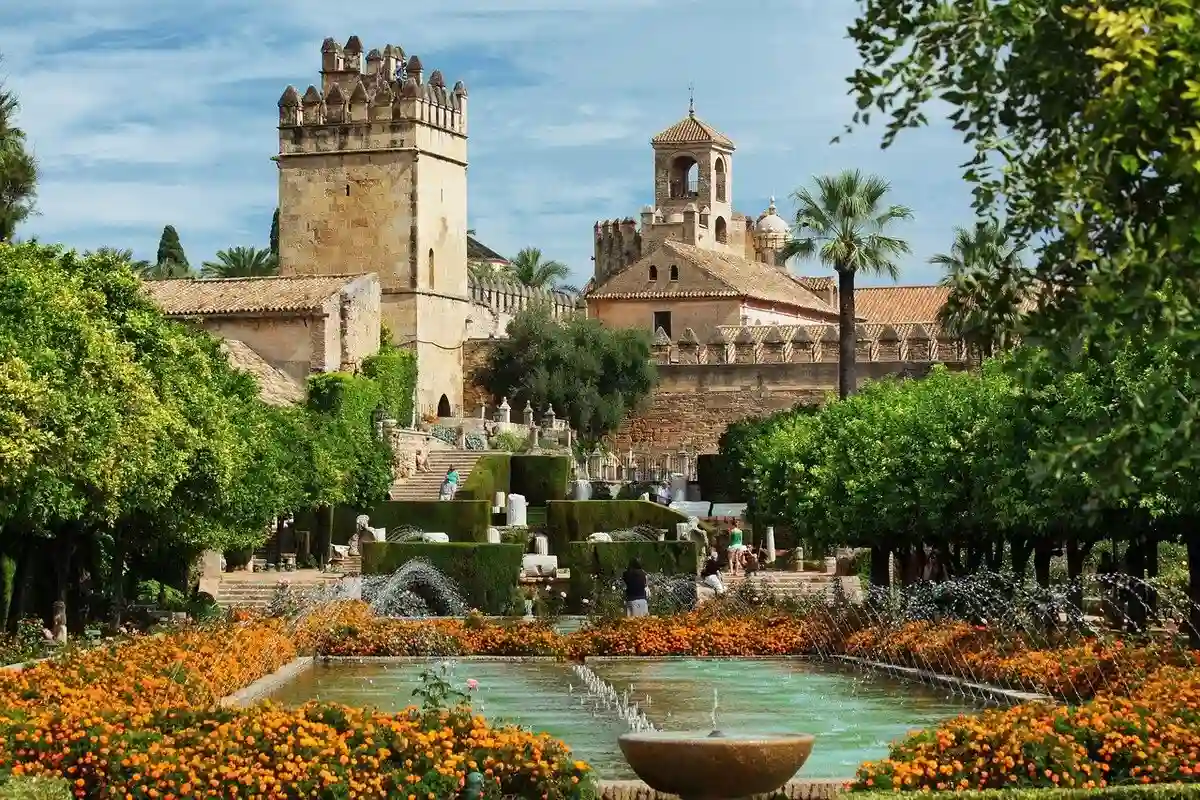
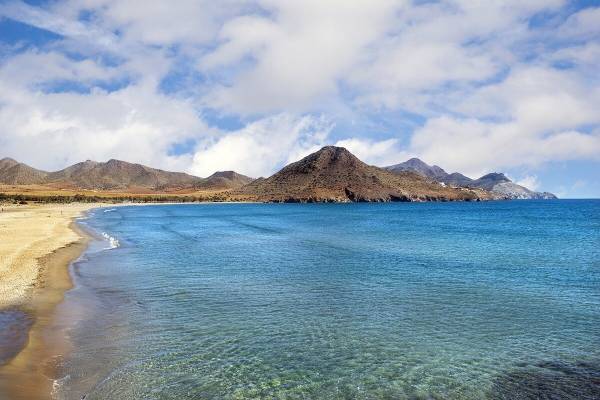
Malaga is now on our radar! We could easily spend a few weeks exploring here. Lots of sun with excellent food choices would be a relaxing holiday.
I love the idea using Málaga as a base for exploring more of Andalusia and other destinations. There is a distinct possibility of traveling to Spain next fall for an extended period and this blog will be so helpful. THXS for posting.
Malaga looks beautiful . I would love to visit Atarazanas Market would spend some time in there and all those wonderful beaches. Wsss there as a young lad about 20 years ago but if I’m honest back then sightseeing wasn’t on the agenda. Would love to try it again
Malaga, Spain keeps calling my name! Beautiful guide of all the wonderful things to do here…and especially love the history, food and beach aspects!
This took me back to my own Malaga trip. Loved that city and now I see there’s even more I should have done there. Where was that cube back then? Good work.
So glad that this slice of Spanish paradise is being highlighted once again. I love the town and Malaga puts a spell to anyone who set foot on this promising city of the Andalusian south ;-) #flyingbaguette
I used to hear about Malaga a lot when I was a kid. Maybe it went out of favor with the Brits but it looks like there’s plenty of history and beaches to appeal.
Knowing how we try to uncover history and preserve it today, it is amazing to think that one amazing Roman site was used for stone to build another. Looks like an awesome place to visit.
Great post! I’ve wanted to go to Malaga for a long time. Great information thank you!
Málaga looks so beautiful! I love all attractions that you listed here: the beaches, parks, cathedrals, etc. I will definitely check out this place on my next trip to Spain!
I have been fascinated with Alhambra after watching this K-drama called the memories of Alhambra. Malaga looks attractive as well. I would love to visit there one day.